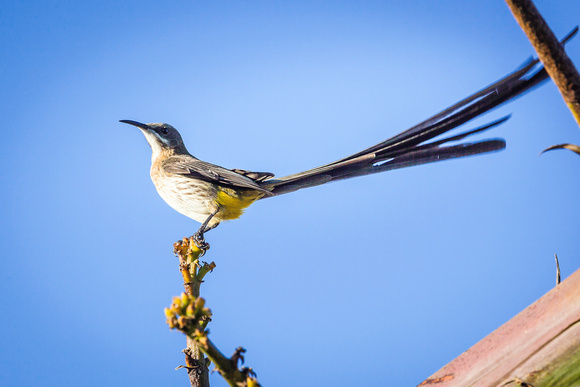Cape Sugarbird (Promerops cafer) – male
Cape Sugarbird (Promerops cafer)
17 inches long.
Endemic to the Fynbos biome of the Western Cape and Eastern Cape provinces of South Africa.
Fynbos is the natural shrubland or heathland vegetation occurring in a small belt of the Western Cape of South Africa, mainly in winter rainfall coastal and mountainous areas with a Mediterranean climate. The Fynbos ecoregion is within the Mediterranean forests, woodlands, and scrub biome. In fields related to biogeography, fynbos is known for its exceptional degree of biodiversity and endemism.
The Cape sugarbird is a specialist nectar feeder when it comes to feeding off Proteaceae. Its long, sharp beak is used to reach the nectar of a variety of species of protea with its long brush-tipped tongue. The staple diet of this sugarbird is nectar; however, it will also eat spiders and insects. The characteristic strong winds in the Cape may make feeding off protea heads difficult, but the Cape sugarbird has adapted to this with the development of sharp claws.
The nest is built by the female alone and is an accumulation of dead twigs, grass and othe vegetable matter, with a neater bowl lined with fibres and dry protea down. It is usually placed 3 to 6 feet above the ground, but sometimes higher and is usually in a protea bush. Normally lays 2 eggs.
Photographed at Boulders Beach, Cape Peninsula, South Africa.


